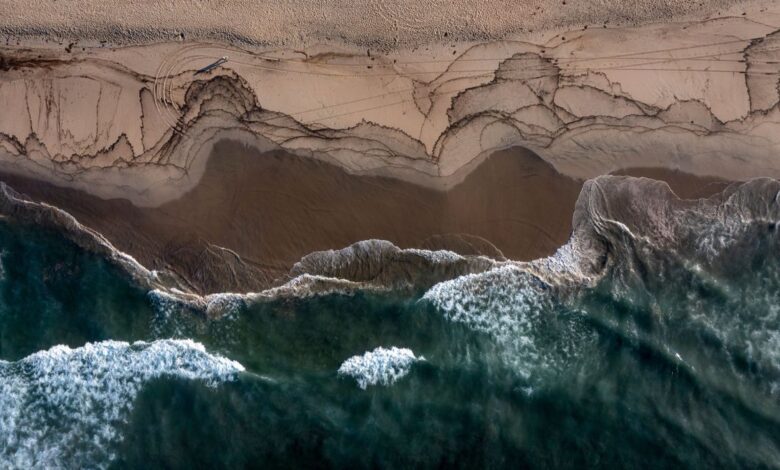California oil spill: Pipeline wasn’t shut down for more than 3 hours after pressure failure alert, feds say
The U.S. Coast Guard said divers located a split in the pipeline more than a foot-long. Investigators believe it could be the source of the leak. California Gov. Gavin Newsom declared a state of emergency in Orange County late Monday to help with clean-up efforts. The Coast Guard said it did not investigate initial reports of the spill due to a lack of corroborating evidence, darkness, and technology.

Authorities believe they have identified the source of an oil spill off the California coast that has shuttered beaches and threatened wildlife. But as more information is revealed about the ecological emergency, more questions arise.
The source of the spill that spewed up to 144,000 gallons of crude oil into the Pacific Ocean likely came down to a 13-inch split found in a 4,000-foot section of the pipe that had been pulled about 105 feet to the side, authorities said.
“The pipeline has essentially been pulled like a bow string. And so at its widest point is about 105 feet away from where it was. So, it is kind of an almost a semicircle,” Amplify Energy CEO Martyn Willsher said at a news conference Tuesday.
The discovery may provide insight into the source of the leak, but not the cause. Authorities are still investigating what precipitated the displacement and split in the pipe.
The 17-mile long, 41-year-old pipeline is about 98 feet under water. About 16-inches in diameter, the steel pipe is encased in concrete as it lays along the ocean floor.
A preliminary report indicates the partial tear could have been caused by an anchor that hooked the pipeline, the US Department of Transportation Pipeline and Hazardous Materials Safety Administration said in a notice to Amplify Energy, the owner of the ruptured pipeline.
There is no confirmation of a vessel above the site of the spill, but a response team is working with other agencies to determine whether a ship was in the area, said Capt. Rebecca Ore, the commanding officer at US Coast Guard Sector Los Angeles-Long Beach.
In the transportation department’s “corrective action order,” Amplify Energy is directed to shut down the affected pipeline entirely, provide maintenance and inspection records, and complete a root cause failure analysis, among other requirements. Only then can it submit a plan to resume operation.
Cleanup boats floated a mile-long chain of booms to help slow the spread of the shimmering spill that left black ribbons and gobs of oil along the shoreline. Dwayne Brady and his small dog, Killer, watched crews along the beach combat the spread of oil.
“You’d think in this day and age a spill that’s this large would have immediately been detected and stopped,” he said, shaking his head. “This shouldn’t have been this bad. No way.”
The pipeline was supposed to be monitored by an automated leak detection system and control room staffed 24 hours a day, seven days a week. The system, part of Amplify’s spill response plan, was designed to trigger an alarm whenever a change in the flow of oil is detected. How fast it can pick up on those changes can vary according to the size of the leak.
When 10% or more of the amount of oil flowing through the pipeline is leaking, the detection time is about five minutes. Smaller leaks take up to 50 minutes to detect, according to the plan.
Along with pinpointing the cause of the leak, the criminal and civil investigations will try to determine why it took so long for Amplify to learn of and report the unfolding disaster.
The first emergency call came in Friday at 6:13 p.m., and it wasn’t from Amplify. A ship had noticed a sheen in the water, according to a federal report on the California Governor’s Office of Emergency Services spill report website.
Officials at the National Oceanic and Atmospheric Administration notified the federal response center twice that night of a possible oil spill less than 5 miles off Huntington Beach, according to updates on the California emergency services website.
The Coast Guard addressed questions about the timeline Tuesday and said it did not investigate the initial reports of the oil spill for nearly 12 hours because it didn’t have enough corroborating evidence and was hindered by darkness and a lack of technology.
Capt. Ore said the first reports about oil possibly in the water “are fairly typical for pollution response agencies.” She noted officials started looking into the reports and calling other agencies but nightfall made it difficult to see oil sheen in the water.
Rear Admiral Brian Penoyer also said it was common to get reports of a sheen near a busy seaport.



